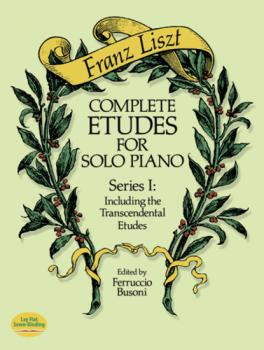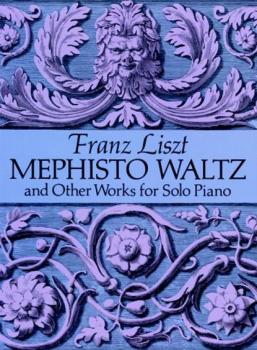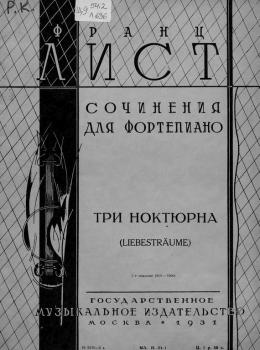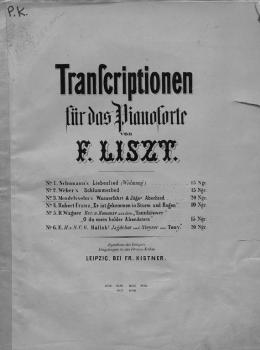ТОП просматриваемых книг сайта:
Ференц Лист
Список книг автора Ференц ЛистАннотация
Liszt's reputation as perhaps the greatest pianist of all time is powerfully supported by his dazzling body of work for solo piano. The undiminished popularity of his etudes with pianists and audiences alike have made them among the most performed and recorded works for solo piano in the romantic repertoire.This superbly produced yet inexpensive two-volume edition presents all of Liszt's etudes as edited by the great pianist, composer, and musical scholar Ferruccio Busoni for the Franz Liszt Society and published by Breitkopf and Härtel in Leipzig in 1910–11.This first volume, Series I, includes many of Liszt's most inspired piano works. The Etude en 12 Exercises and the 12 Grandes Etudes can both be regarded as early versions of the Etudes d' Exécution Transcendante (Transcendental Etudes). Each set is a highly successful work in its own terms, and both generally surpass the famous final version in difficulty. The separate «Mazeppa» is yet another working of one of the etudes from these sets. The individual etudes range dramatically in style from the delicate refinement of «Feux Follets» to the startling bravura of «Wilde Jagd» (both from the Transcendental Etudes). Each will bring to pianists and their listeners a moving encounter with the genius of this towering musical personality.
Аннотация
A prolific composer and virtuoso pianist, Franz Liszt (1811–1886) was the most lionized musical personality of his time. His compositions for solo piano continue to be loved and admired by pianists and their audiences for their lush Romanticism and technical fireworks. They remain among the most frequently performed works in the repertoire. This choice selection of Liszt piano works reveals the powers at this extraordinary composer's command: Mephisto Waltz No.1; Nuages Gris; Liebesträume Nos. 1, 2 & 3; Grand Galop Chromatique; Polonaises Nos. 1 & 2; Valse-Impromptu in A-flat Major; Fantasia and Fugue on the Theme BACH; La Lugubre Gondola I & II; Valse Oubliée No. 1; Czárdás Macabre; Gretchen (from A Faust Symphony); Unstern: Sinsitre, Disastro; and Rhapsodie Espagnole.
Аннотация
Unrivaled as a virtuoso pianist in his own day — and perhaps still — Franz Liszt was a composer of daring originality. He introduced new conceptions of harmony and melody and made radical innovations in piano technique. In a long and prolific career, he produced over 400 works for piano — brilliant compositions with flashes of eloquence and energy that evoke a full, rich orchestral sound. Best known and best loved are the Hungarian Rhapsodies.Reproduced directly from an authoritative Russian edition of the composer's works, this inexpensive and sturdily bound volume presents the complete Hungarian Rhapsodies for solo piano: No. 1, in C-sharp Minor; No. 2, in C-sharp Minor; No. 3, in B-flat Major; No. 4, in E-flat Major; No. 5, in E Minor; No. 6, in D-flat Major; No. 7, in D Minor; No. 8, in F-sharp Minor; No. 9 (Pester Karneval; «Carnival in Pest»), in E-flat Major; No. 10, in E Major; No. 11, in A Minor; No. 12, in C-sharp Minor; No. 13, in A Minor; No. 14, in F Minor; No. 15, (Rákóczy March), in A Minor; No. 16, in A Minor; No. 17, in D Minor; No. 18, in C-sharp Minor; and No. 19, in D Minor.This edition features English translations of all headings and footnotes that originally appeared in Russian. Published in association with the American Liszt Society, this edition offers all the quality features musicians have long associated with Dover: clear reproduction of musical notation, ample space for analysis, notes, fingerings, etc. Classical pianists, students, teachers, and lovers of music will applaud this handsome volume for playing or study — a convenient, affordable opportunity to explore some of the great masterpieces inspired by Hungarian gypsy music.










